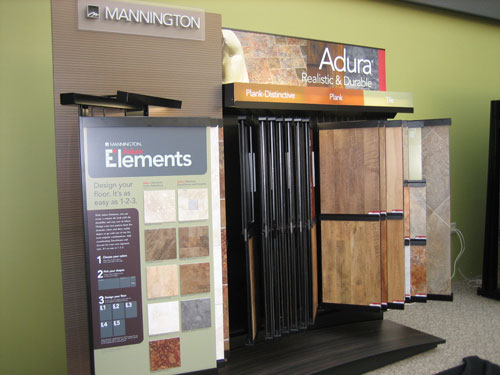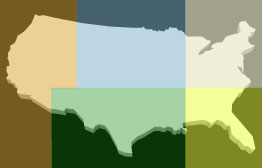 Most products cross all boundaries when it comes to popularity—big screen TVs are in demand in New York as much as they are in California or Florida.
Most products cross all boundaries when it comes to popularity—big screen TVs are in demand in New York as much as they are in California or Florida.
But when it comes to home decorating items like flooring, where a person lives in the U.S. plays a major role not only on the types of products bought but the particular styles used to spruce up the home. For example, houses in the Northeast are often decorated in more traditional looks while those in the Southwest incorporate more of the region’s Native American heritage in their decors.
FCNews scoured the country surveying some of the industry’s most respected retailers to find out what some of the hottest selling products and styles are in five basic regions— Northeast, Midwest, Southeast, Southwest and West Coast.
Northeast
Consumers purchasing value-added products, plus competitive pricing, authenticity
With the sales year nearing a close, retailers across the U.S. are preparing to stock for 2011. While product sales varied from state to state, almost every dealer reported the greatest numbers occurring in the middle to upper price range across all categories, with very few customers seeking the lowest priced, bottom-of-the-rung goods.
Shoppers looking for the bare minimum at the lowest cost do not typically visit specialty retail stores that specialize in product selection and service. “Those buyers go to the big boxes for lower price but they are really not saving anything,” observed Gary Lawrence, president of Mainline Supply in Binghamton, 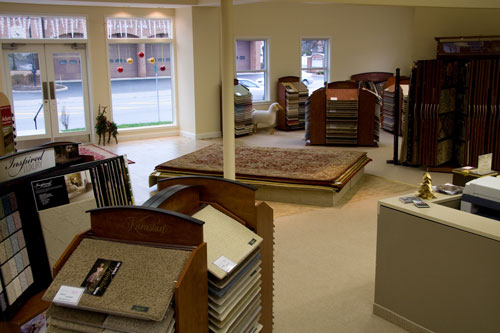 N.Y. “They are going to have more problems down the road.”
N.Y. “They are going to have more problems down the road.”
Consumers in the Northeast are looking for a product that will not only add lasting beauty to the home, it must also add value. With the housing crisis affecting existing home sales the most in the Northeast, homes need to be improved with a better looking, more reliable product.
Generally across the Northeastern states, carpet remains the biggest seller. In fact, almost every dealer with whom FCNews spoke cited carpet as the hottest product, taking anywhere from 30% to 50% of a given store’s sales. Carpet took 48% of sales at Ideal Flooring in Falmouth, Mass., according to Mark Woods, president and CEO. “Consumers are big on warranty and stain resistance and nylons are doing great because of that [stain resistance],” he explained, adding that Anso is doing exceptionally well.
A trend within carpet, unique to the category, that has buyer interest piqued is softness (FCNews, Aug. 2/9). “Soft, soft, soft,” said Karen Cook, co-owner of Cook & Kozlak Flooring Center in Canton, Conn. “Customers want to touch it and it has to be soft.” She reasoned a change back to a preference in her store for cut pile was a result of the need for touchable softness with trackless characteristics.
Nylon carpet is also a big seller further south in Westbury, N.Y. Wendy Fried of G. Fried Design Center cited soft surface taking the major share of sales in continuous filament textures with a few LCLs. “Shags are really coming into play,” she said. “The Northeast is finally getting used to shags with colors.”
While shag fills the niche for soft flooring, it can be a daring buy for today’s conservative buyers, so many are opting for the safer route and buying shags in area rugs. “On more of the contemporary side, the shags are taking off and people seem to be liking viscose, shiny textured, more stringy than broadloom,” she said. “Area rugs make more of a striking impact.”
In fact, area rugs are making somewhat of a comeback in the region, particularly at Messner Carpeting in Rochester, N.Y. As a Karastan dealer, the store has consistently carried a selection of area rugs, but consumers aren’t buying the way they used to, said Peter Messner. “The marketplace likes 6 x 9 rugs under $600, so two years ago we started playing around with the category. The new products have been a home run and running with the new price range of products, we can buy aggressively from our regular suppliers like Nourison, Karastan and Kaleen.”
Hard surfaces not a hard sell
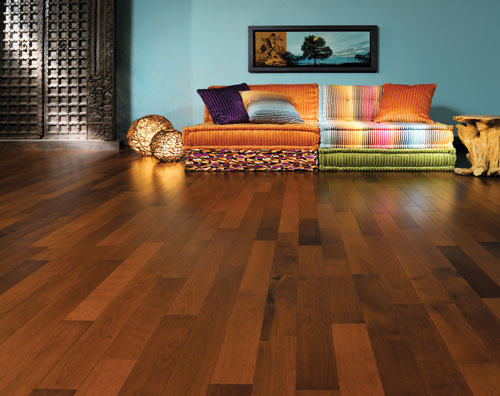 Hardwood was commonly the second best seller among those surveyed in the Northeast, though it ran first in certain cities. Mainline Supply sells more hardwood than anything else, particularly in exotics like Brazilian teak and tigerwood, said Lawrence. His customers don’t seem concerned with the environmental issues associated with imported wood and instead choose them for durability and hardness. “We get our runs with oak but everyone is concerned with indentations, so they think harder woods will improve that. What they don’t realize is that a finish is a finish, and it will scratch.”
Hardwood was commonly the second best seller among those surveyed in the Northeast, though it ran first in certain cities. Mainline Supply sells more hardwood than anything else, particularly in exotics like Brazilian teak and tigerwood, said Lawrence. His customers don’t seem concerned with the environmental issues associated with imported wood and instead choose them for durability and hardness. “We get our runs with oak but everyone is concerned with indentations, so they think harder woods will improve that. What they don’t realize is that a finish is a finish, and it will scratch.”
He said most installations in his market today are homes done entirely in hardwood, with ceramic bathrooms. “Wood seems to be hot product [here] right now.”
The New Jersey market is also doing well with hardwood. World Wide Wholesale in Edison, sells a lot of exotics like Brazilian cherry, tigerwood and cumaru in both solid and engineered at about a 50/50 mix, said Darren Braunstein. “In New Jersey, we sell a lot of traditional, oak engineered products in smooth, as well as handscraped, but it is not the majority.” He added that customers haven’t been asking for certifications and proof of responsible sourcing and production.
Interest in green products and certifications is more prevalent into the north. There has been greater buyer enthusiasm about bamboo and cork at Cook & Kozlak, “but people make the decision at the last minute to stick with traditional wood,” Cook said. “They’re worried about bamboo affecting the value of the home when it sells and that it won’t look like other houses in the area, though it’s nice to have people interested.”
Her customers are interested in authenticity and have taken to the engineered, character woods, particularly from Mirage, Armstrong and Homerwood. “People in this area immediately ask for ‘real wood’, and I have a myth to dispel, that engineered isn’t real wood,” she said. “End users are becoming more aware of this and for the wider widths and character looks, those are more available in engineered [constructions].”
Ideal flooring has also seen an uptick in engineered hardwood sales, bringing its share up to around 23%. “New England has always been solid strip but we are seeing a move toward engineered as they become more authentic looking,” Woods explained. “It’s been easier to convince the contractor that the product will perform better to withstand nicks and scrapes, and the consumer is more educated now, too.”
He cited HGTV’s Green Home as an example of how mills are using the media to educate buyers about product properties (FCNews, July 5/12). Though handscraped, distressed products are relatively new products from the mills, they are performing well and word of mouth is traveling.
Parts of the Northeast strongly experiencing the effects of the soft economy have moved buyers to be a bit more conservative, and hardwood reflects that. Airbase Carpet & Tile Mart sells more of the traditional hardwood in solid oak. “We show the other styles but we sell the beige of the wood business,” said Michael Longwill, president. “People are staying with what they know.”
Even its second-strongest hard surface segment is sticking to traditions in wood look-laminates. “Embossed in register and exotics with exciting new attributes are being shown but people are staying traditional,” he said. “We thought laminate would start to sell with the beveled edges, but it is back to the basics.”
Resilient sales
Most retailers cited lowered laminate sales than in prior years, mainly due to the rising popularity of LVT. Economic timing and improved product attributes were cited at Florhaus in Leola, Pa. “The big problem with laminate is moisture and LVT provides assurance against moisture that laminate can’t provide,” said Amos Stolzfaus.
Some of his other ideas for LVT’s success included great visuals. “Products like DuraCeramic and Alterna look and feel three dimensional. Like ceramic, you can actually feel the grout join,” he said, adding that customers are also requesting Konecto’s floating floor systems.
Education was a big part of the LVT excitement, not only for consumers but of the staff. “If our salesperson is psyched abut the product it will be the first that he shows the customer, so we will have more success in selling it.” Stolzfaus has seen a gain in salespeople going back to asking for the needs and requests of the customer and better matching those with appropriate products. His said his staff is revved up for the market release of Mannington’s new LockSolid.
Luxury vinyl planks have gained popularity in Severna Park, Md., at Family Floors, especially in the wood look. “Many people would put engineered 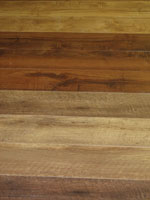 [hardwood] floors on their lower levels but because of the recession they’re using the wood look in vinyl,” said Mitchell Norin, sales manager. “The planks look better than sheet goods plus they’re tougher and stronger. In fact, I just put it in my son’s basement.” Products of particular profit at his store include Konecto and Armstrong’s Luxe Plank. Sheet vinyl still has a strong place in the mid-Atlantic, as does ceramic tile. Commonly installed in place of the original counterparts, sheet and ceramic tile are easier to install and maintain, and have improved with much more realism in visuals, said Norin, citing American Olean and Marazzi as his top suppliers.
[hardwood] floors on their lower levels but because of the recession they’re using the wood look in vinyl,” said Mitchell Norin, sales manager. “The planks look better than sheet goods plus they’re tougher and stronger. In fact, I just put it in my son’s basement.” Products of particular profit at his store include Konecto and Armstrong’s Luxe Plank. Sheet vinyl still has a strong place in the mid-Atlantic, as does ceramic tile. Commonly installed in place of the original counterparts, sheet and ceramic tile are easier to install and maintain, and have improved with much more realism in visuals, said Norin, citing American Olean and Marazzi as his top suppliers.
Florhaus specializes in tile and Stolzfaus believes that is a requirement to sell a lot of it. “You have to have someone on staff who is creative and can present ideas and designs for the consumer because that is one place where 90% of consumers will get confused with all the choices,” he said. “The success of tile is having someone on staff who can put it together in color and design.”
-Emily Hooper
Southeast
Texture dominates style landscape
In the Southeast, as in other regions of the country, the biggest sellers continue to depend upon the economy. Michael Barrows, vice president of residential sales for Atlanta Flooring Design Centers, said, “I’ve seen the trend going toward carpet in living, dining, home theater. What was the steady increase in tile and hardwood has trended down. I feel most of this is due to the current economic downturn. Folks have changed their budgets. It is still porcelain tile and/or the new fast changing market over the past six months, luxury vinyl tile, in rooms such as kitchens, bathrooms and laundry areas.
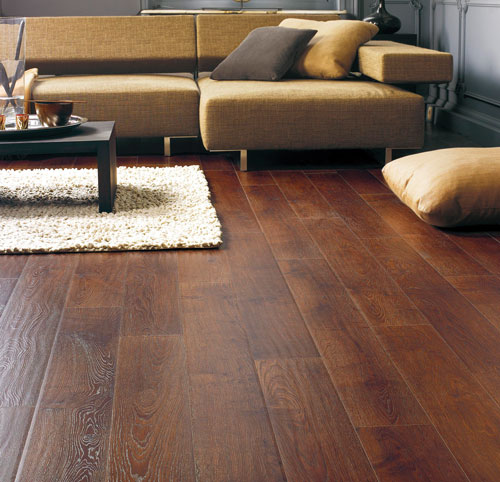 “At one time hardwood and before that laminates were the stronger but they have since taken a back seat,” he explained. “Again, much of it is budgetary but I see a lot of folks investing in kitchen and bath remodels, realizing that they will be staying in their homes longer so making the adjustment by upgrading still feels like the better investment and they will get a return on investment later at the time of sale.”
“At one time hardwood and before that laminates were the stronger but they have since taken a back seat,” he explained. “Again, much of it is budgetary but I see a lot of folks investing in kitchen and bath remodels, realizing that they will be staying in their homes longer so making the adjustment by upgrading still feels like the better investment and they will get a return on investment later at the time of sale.”
There are two styles of carpet Barrows sees in the upturn. “First and foremost in dining, living and entertainment rooms, cut/loop patterns, whether they be of the geometrical or floral design tend to be popular while berbers are out. I believe the customer feels she is getting a more elegant look and something that gives the appearance that it’s different and is for her home and is unlikely to be in her neighbor’s house. Second would be in the bedrooms and family rooms, which are trending more to the frieze with or without color flecks. Being family friendly with very low maintenance, its popularity has continued to grow.”
The newest and latest for carpet sales are the color walls, he noted, especially with the new softer yarn systems. “All three major mills are responding quickly. Mohawk and the SmartStrand yarn have really got the jump on the market. Both Beaulieu and Shaw have responded, as consumers are spending more time with family and friends in the home and the added softness adds warmth and comfort to movie or game night. The stain resistance doesn’t hurt either.”
According to Missy Montgomery, an owner and secretary for Montgomery’s CarpetsPlus in Venice, Fla., “our best seller is by far laminate flooring. Quick•Step is our No. 1 seller followed by Shaw laminate. We tend to sell more hard surface products due to the fact people are concerned with replacing carpet and having that recurring cost. Also, the durability can’t be beat. We have many factors in Florida such as sand and sun fading that many parts of the country do not encounter. As owners we all have laminate flooring in our homes and that says a lot to the customer.
“We also have a large area of our showroom dedicated to laminate laid on the floor and clients can see the beauty and ease of taking care of it,” she added. “The styles are tending to go more toward the country (distressed) look and the total opposite end of the spectrum, high gloss. It’s been so popular, we actually stock this product. It has the look of high-end wood without the cost and is virtually maintenance free.”
Back in Georgia, Jerry Hennon, president of Carpets of Dalton in Dalton, said in broadloom he is seeing a shift to more tailored, subtle colorations. “We’re going back to, not a real formal look, but a little more formal than where we’ve been. We’ve been real casual for a while. We’re seeing people buy more tailored products, particularly in the Stainmaster and the mid- to upper end products. We’re doing very well with a multicolored pro- duct from Dixie, which features more subtle colorations called Maximum Effect. It’s more of a tone on tone product. In the lower end, polyester is ruling the roost. We’re at price/value in this economy. It’s ruling the lower to mid-end.
“You still have those people who come in and want the best and they are going to pay for it,” he explained, “but right now we are getting a lot of, ‘We know it is not the time to sell, we don’t know what is going to happen two years down the road, so we don’t want to put too much investment in it.’ People are trading down a little, still some trading up, but we are seeing more trading down.”
In hardwood, he noted, in the economy priced area, the top seller for Carpets of Dalton is a Blueridge plank—a 3-1⁄4 inch oak with a smooth face. “We also do pretty well with the wider planks, the hand-scraped type products. “We don’t do as much in laminate as we do in other products,” he added, “but we do very well with the Shaw entry-level product, Natural Values. It’s trending toward the lower gloss levels, more natural type styling. In the vinyl, all we really sell is a fiberglass backed loose lay type product. Most of the volume we do there is with Armstrong’s Initiator and Mannington’s Benchmark.
“We are doing very well with ceramic tile,” Hennon commented. “We’re selling a slate look product called Mediterranean Stone from Mediterranea, which has kind of a natural stone look with pits in it. We import our tile from many different brokers, and there are the different slates, such as African slate, which is a good seller for us.”
Paul Demarais of Hadinger Flooring in Naples, Fla., said, in laminate, “we don’t have any special style that is a top seller at this time, as we show several 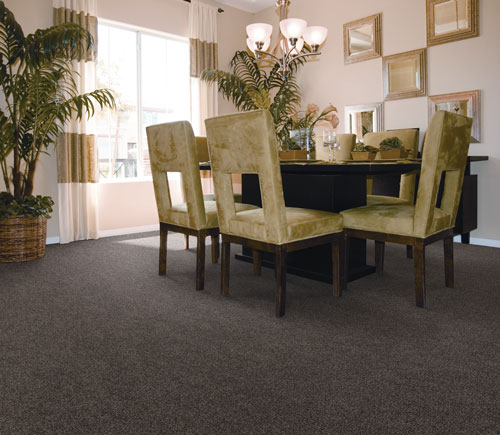 different manufacturers. Two styles we’ve done a lot of volume in has been Armstrong’s Grand Illusions and Park Avenue high gloss.”
different manufacturers. Two styles we’ve done a lot of volume in has been Armstrong’s Grand Illusions and Park Avenue high gloss.”
In tile, International Wholesale Tile’s (IWT) Umbria, a 20-inch porcelain that comes in four colors has been one of the store’s biggest ceramic movers, while Mohawk’s Miravista, another 20-inch porcelain avail- able in two colors has also been quite popular.
In carpet, Karastan’s Buona Vita, a 65-ounce textured Stainmaster product has performed very well for the company, as has Woodland Pass, a 56-ounce SmartStrand with Dupont Sorona offering, as well as Essential Living, a 65-ounce offering, also featuring SmartStrand with Dupont Sorona.
In hardwood, a 1⁄2 X 5-inch engineered product called Forest Accents in Capri Plank/African Teak is doing very well, while from USFloors, its strand woven bamboo and horizontal carbonized bamboo, both solids, are doing quite well for the company.
From Mohawk, Raschaire, a 3⁄8 X 5-inch hand-scraped engineered offering available in two colors has been a hot seller, while the CFS Rio Collection in tigerwood, 9⁄16 X 5-inch engineered product has also done well.
“We sell very little resilient,” he added. “It is less than 1% of our total volume sales.”
Also in Florida, Steve Elder, owner of Gainesville CarpetsPlus in Gainesville, was quite philosophical about his company’s top sellers. “I’ve seen a change in our customers since the [recession] started. Because of homes devaluing and not selling, people are investing in their existing homes. They’re actually spending on higher quality flooring and in larger amounts. The average age of a customer is closer to retirement and looking for a more permanent decoration solution.
“It isn’t unusual to find ourselves apologizing to a customer when the estimates seem so high, only to find it is not offensive to them,” he explained. “I, myself have been in the business for 32 years and this is the first year for me to experience purchases of higher end items consistently. Perhaps it means Lowe’s and Home Depot are serving the individual with less to spend. I don’t know. We just don’t see many of them this year.
“We sell hardwood and laminate at an equal rate,” continued Elder. “Armstrong, Mirage and Quick•Step, are our best sellers. We’ve seen an uptick on vinyl with the new Armstrong products because of the increase of quality in their construction.
“Most carpets sales are based on taste, with friezes and textures in the mid to top grades selling,” he concluded. “People want performance and longevity. We’ve been removing carpets that were installed in the ’80s. Stainmaster pad, though expensive, is a product that customers like because of its quality and we can sell it with confidence knowing it will last.”
-Louis Iannaco
Midwest
In a ‘value’ market, soft fibers, LVT excel
Soft fibers, especially solution-dyed polyesters; metallic grays across all categories; and luxury vinyl tile are among the hot-selling products for retailers in the Midwest. The common denominator linking these categories is value; if the products are priced right, consumers will buy. If not, it won’t matter how great the product looks.
“I know the consumer will buy if you offer her a deal, so you have to have some pretty terrific buys on your floors in order for the customer to respond,” said 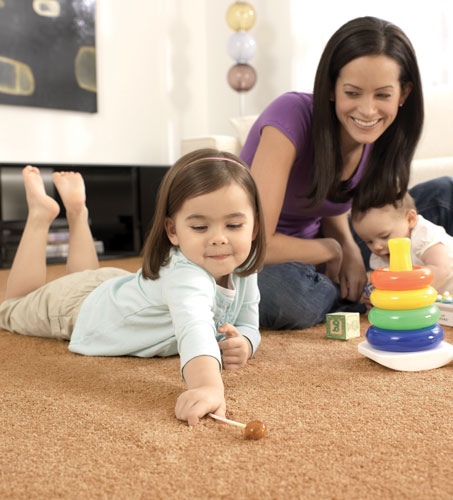 Olga Robertson, president and CEO of Floor Covering Associates with seven stores in the metro Chicago area. “Right now the value proposition is filament polyester and in some of the solution-dyed filament polyesters.”
Olga Robertson, president and CEO of Floor Covering Associates with seven stores in the metro Chicago area. “Right now the value proposition is filament polyester and in some of the solution-dyed filament polyesters.”
Robertson said niche mills like Phoenix are making some noise in the category. “Phoenix does a big job with filament dye polyester,” she said.
Pierce Flooring & Design, which operates eight stores in six Montana cities, has seen extreme downward pressure from consumers on price, according to Will Osborne, operations manager for the residential division. “A lot of what we’re seeing is a migration back to our roots in carpet and sheet vinyl,” he said. “Carpet and vinyl traditionally offer the best value in terms of lowest installed pricing. Value is a nice way to say that people are buying on price.”
In the Ohio market, solution-dyed polyesters from Mohawk, Dixie Home and Phoenix are doing well, as are soft nylons, said Ken Weisbacher, president of Carpetland Carpet One with 19 stores in Ohio. Carpetland has done particularly well with CCA Global’s Tigressa Softstyle Carpet, which launched in January. Tigressa is exceptionally soft to the touch while combining strength and durability through its precision nylon fibers. “Our customers like the soft fiber of Tigressa and the price points are pretty much in line with the soft polyester price points,” he said. “It has been outstanding for us.”
Soft is a continuing trend in carpet, according to Robertson, who noted that in her market Stainmaster (“still the most recognizable brand today”) and Beaulieu with Magic Fresh, an odor-controlling carpet treatment, offer great selling opportunities for retailers. “Most women are offended by odors, and many homeowners have a pet, so Magic Fresh is important. It is an added bonus.”
Nebraska Furniture Mart reported that the patterned broadloom category is growing in popularity in its market, said Dave Snedeker, flooring buyer. “By and large for broadloom and area rugs the primary focus is promotional goods, lower price points, value oriented goods. Programmed mainstream goods have taken the hit this year.”
There was a time when flooring lagged other consumer product categories regarding fashion trends. But Robertson said this time the flooring industry is in step with other segments with gray a dominant theme. “Gray seems to be in all the new palettes in the mills, not just in carpet but in laminate, tile and LVT.”
Value is a big a story in hard surfaces as well, with LVT gathering strength in various Midwest markets. “Luxury vinyl tile is gaining momentum and market share, it being our fastest growing category this year,” said Snedeker of Nebraska Furniture Mart.
“People are not spending money foolishly as they had in the past. They are looking for a deal, and LVT gives you that,” Robertson said. She identified Mannington’s Adura and Congoleum’s DuraCeramic as must-have products for retailers. “If a retailer doesn’t have DuraCeramic on the floor he is missing the boat. Going with those products is an opportunity to do something fairly economical and still have the look.”
Robertson said the popularity of floating floors is not a fad but a trend that will continue to grow. “From a retail perspective this is an opportunity to get into the customer’s home more often. I think women like the idea. If you tell them up front in the sales process that, ‘Hey, I know you are going to replace this floor in seven years,’ it will be easier to do that if you have a floating floor.”
-Ken Ryan
Southwest
Buyers looking for texture, pattern
In the Southwest, contrary to popular opinion, carpet seems to be king—with the more textured and patterned styles leading the way—as the economy continues to be a driving force in what end users are allowing themselves to purchase.
“We have seen a renewed interest in carpet, especially SmartStrand with Dupont Sorona,” said Sam O’Krent, principal of O’Krent’s Abbey Flooring Center in San Antonio. “These carpets offer an exceptional apparent value with the comfort of a ‘stain-free’ carpet experience. Our best sellers in this category tend to be on the higher price end of the scale, from $4.50 to $5.25 a square foot.
“We feel that today’s customer is more value conscious,” he explained. “They have already made the decision to stay in the house and remodel, yet they know their dollars are more valuable today and want to make sure they make a selection that they will be comfortable with for years to come.”
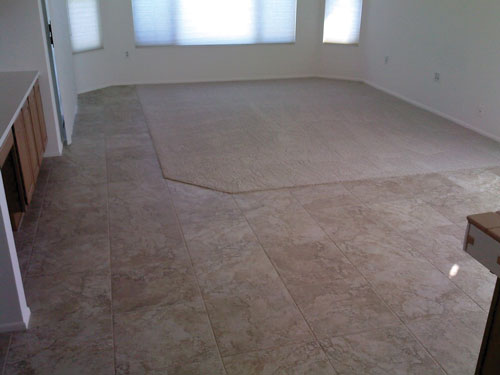 Phil Koufidakis, president of Baker Bros. in Phoenix, told FCNews, “Carpet has stayed more consistent than other surfaces. Pattern products continue to improve but the whole house business is still in the textures and friezes. We’ve seen growth in loop products and sophisticated looks like ‘Treanna’ from Moda. The frieze and textures are going softer and Stainmaster Luxurelle products like Dixie’s ‘Mystic Beauty’ and Masland’s ‘Shangri-La’ have done well for us.
Phil Koufidakis, president of Baker Bros. in Phoenix, told FCNews, “Carpet has stayed more consistent than other surfaces. Pattern products continue to improve but the whole house business is still in the textures and friezes. We’ve seen growth in loop products and sophisticated looks like ‘Treanna’ from Moda. The frieze and textures are going softer and Stainmaster Luxurelle products like Dixie’s ‘Mystic Beauty’ and Masland’s ‘Shangri-La’ have done well for us.
“Finally, tonal products continue to sell well,” he added, “less berber fleck and more tone on tone and light dye/deep dye products. Hardwood is growing out here over other hard surfaces. The hand-scraped is getting softer and the gloss is getting a little glossier. With all the options available, customers are all over the board on selection, so I am not sure I can give one specific product or collection that sells.”
For Brent Bowman, owner of Crown Carpet Colortile in Sun City West, Ariz., “The best selling carpet in our store has been Hollytex Escapade II (70 ounces) and Durango II (85 ounces) heavily textured nylons. Textures still seem the choice of the majority of people, and these are among the best.
“Made of Hollytex’s solution dyed nylon, it’s also a very soft fiber,” he added. “Being solution dyed, if you get a spot that won’t come out with normal cleaning, you can use a 50% bleach solution to remove the spot and it won’t damage the carpet.
“Both styles are 1/10th gauge, 10 stitches per inch across, and over 10 stitches per inch lengthwise on the Durango, and 9.5 stitches per inch lengthwise on the Escapade,” Bowman noted. “This makes these carpets so dense that they virtually won’t show any signs of corn-rowing in high traffic areas. They also show less footprints and vacuum lines than most textures. Finally, they are made with high pik backing for strength, and are feature Magic Fresh Odor destroying treatment.
“Our top selling ceramic tile is Dal-Tile’s Stone Beige,” he continued. “This is an18-inch porcelain that looks like travertine. It is made at a plant in Oklahoma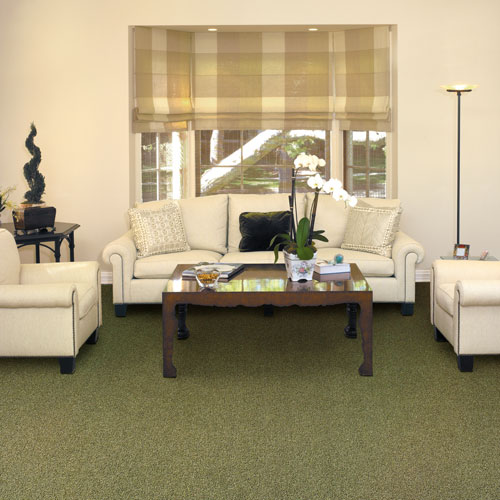 and is very inexpensive (99 cents a square foot). It has the same look as Dal-tile’s Canaletto, which costs about $3.50 per square foot.”
and is very inexpensive (99 cents a square foot). It has the same look as Dal-tile’s Canaletto, which costs about $3.50 per square foot.”
Sam Roberts, president of Roberts Carpet & Fine Floors in Houston, said, “our best selling hardwood product is one that is made with 4mm, dry sawn, American face in a variety of species. The products are random length up to 7 feet long and are engineered 9/16-inches thick, 9 ply. We stock the product in hickory, maple, and walnut and it is hand scraped.”
In broadloom, he noted, no single fabric is special. “We continue to do well with Masland products in a wide variety of styles due to their overall excellence in design, color, and quality.
“I’ve always been primarily a better goods guy and that, by definition, tends to make my offerings and sales more horizontal (spread out). The significant numbers are cumulative as opposed to style specific.”
At Yates Flooring in Lubbock, Tex., owner Bobby Yates noted the best broadloom sellers belong to Shaw with Dialed In and Stepping Up, as well as Tuftex’s Move On Up. In resilient, Armstrong’s Stratamax flooring leads the way, while in the laminate catgory, Mannington’s Louisville Hickory reigns supreme. The store’s ceramic tile leaders include Marrazzi’s Western Stone and Dal-Tile’s Salerno and Stratford. “All travertines and tumbled stone are selling well.
“Our best sellers are typically what we inventory,” he continued, “which present the best values to our customers. Hard surface, especially tile, stone and wood, continue to grow. Hand-scraped products from several different vendors are doing well for us. We also see good growth in patterned carpets like Kane and Oriental Weavers.”
-Louis Iannaco
West Coast
Soft carpets and natural materials driving sales
Residents from Southern California to northern Washington may vary as much as the landscape that traverses passersby along Highway 101. Still, there are some general themes those in America’s western states have in common.
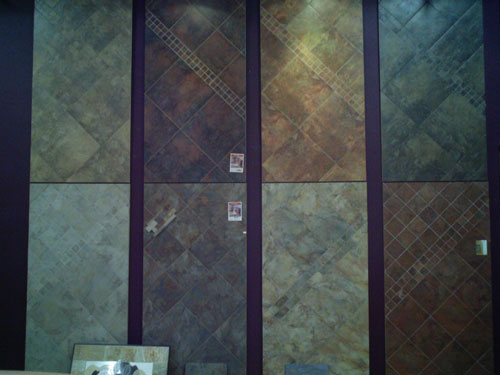 Whether they spend their days along the sunny beaches of San Diego, Los Angeles and all points in between or scouring about the rocky coastlines of Oregon and Washington, when it comes to flooring, consumers in this part of the world have a propensity to purchase carpets featuring soft yarns and products made from or looking like natural materials.
Whether they spend their days along the sunny beaches of San Diego, Los Angeles and all points in between or scouring about the rocky coastlines of Oregon and Washington, when it comes to flooring, consumers in this part of the world have a propensity to purchase carpets featuring soft yarns and products made from or looking like natural materials.
“Our top carpet seller is a soft casual textured style with a 44 ounce face weight constructed of Resista fiber by Shaw Industries called Soft Spoken,” said Scott Walker, president of Walkers Carpet One Floor & Home in Bellingham, Wash. “Overall in the carpet category, soft styles, both nylon and polyester, have been the most popular.”
Moving down the coast to Salem, Ore., David Lee of Color Tile & Carpet described some of his best selling carpets as having “a wonderful feel to the hand.” For example, he describes his No. 2 best seller, Morning Dove, featuring Ultra Touch (100% BCF ClearTouch PET polyester from Shaw) as an example of a “high quality fiber content” with a soft feel.
Matt Bechtold, operations manager for Contract Furnishings Mart (CFM), which has locations in both Oregon and Washington, concurred soft fibers are driving sales. He cited products specifically those from Shaw’s Anso color wall as a prime example, noting, “We have had a great deal of success with [these products]. The soft feel and lifetime warranty really provides a great value for the consumer.”
Further south in California, Steve Boardman of MMM Carpets with more than a half dozen stores in the north-central part of the state, noted his stores are Stainmaster Floor Fashion Centers so carpet is the best selling flooring category.
Within that, “we are starting to do well with the softer styles.” Along those lines, the “hottest” groups of products are Kathy Ireland’s Anso branded carpets by Shaw as well as its ClearTouch styles.
When it comes to the Anso products, he added, “People fall in love with the overall softness once they touch a sample.”
Due to the competitive nature in certain areas of California—mostly from the southern part of the state—a number of retailers surveyed by FCNews provided answers but only on the promise of anonymity, stating they did not want their direct competitors to know their exact best sellers. To ensure their privacy, responses from these dealers were grouped into a general theme.
Interestingly, when comparing responses, they really have nothing to fear since more than 95% reported generally the same thing: Softer styles were selling more, with a mix of nylon and polyester styles.
The three big carpet mills each picked up nods for their products. The order in which dealers ranked their top sellers switched from respondent to respondent but they all centered around Beaulieu, Mohawk and Shaw. In Beaulieu it was its Bliss branded products, specifically those with the softer touch. Products made from Mohawk’s SmartStrand with DuPont Sorona top the styles from that mill. And ClearTouch received top status among Shaw’s products.
Beige is the rage
Regardless of where a dealer is located in Southern California or northern Washington when it comes to the color of carpet being purchased the most 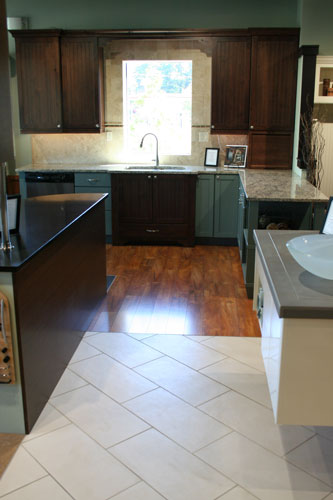 popular remains the same as it has been across the entire country for decades: neutrals, specifically beige.
popular remains the same as it has been across the entire country for decades: neutrals, specifically beige.
And, while soft fibers are the fiber of choice, consumers out west still want their carpets to have a denser construction.
“Neutrals are still the majority, beige, beige and beige,” noted, CFM’s Bechtold. On the construction front, he added, “Twists, though patterns are still popular for single rooms of a house.”
MMM’s Boardman said 70% of the carpets sold at his stores are “beige. Some people are starting to use color.”
At Color Tile in Salem, Lee said his two most popular styles are “beige and tan.” But, as Boardman noted, some color is coming into play and Lee confirmed his top two styles also feature “flecks” of color. The only problem is, these flecks are generally black and brown, or some other neutral tone.
Smooth as glass
FCNews has been reporting in its annual Statistics issue the last few years on how the use glass-backed products have been gaining marketing share among resilient sales and for retailers out west this has certainly been the case.
“Glass-backed sheet vinyl continues to accelerate in popularity,” noted Walker. And, while consumers remain safe when it comes to their carpet styles, he noted “Newer, non-patterned designs with very interesting visuals are winning out over traditional styles.”
Beyond consumers liking these types of products, most retailers commented they, their salespeople and installers also have an affection for them for two simple reasons: simplicity and money.
“Glass-backed sales account for 90% of our sheet business” noted Boardman. “It’s profitable for us and our salespeople, so we love it.” He added, luxury vinyl tile products (LVT), while one of the hottest selling styles in other parts of the country “are not doing as well as they have in the past. We’re doing more with [Congoleum’s] DuraCeramic. When we do sell LVT it is usually Karndean. It has some very good visuals that consumers love.”
When it comes to the glass-backed products, Lee noted, “Installers love this vinyl.”
In terms of actual products, the winners were selections from IVC and Armstrong’s Stratmax. Tarkett’s FiberFloor received a few nods among favorites as well.
Linoleum doing well
Moving away from the glass-back products, a clear second place among retailers, no matter the location was linoleum, specifically Forbo’s Marmoleum branded products.
Part of the reason comes from consumers desiring the way colors are projected from linoleum products, Walker explained. “The popularity of Marmoleum seems to be driven at least as much by the unique visuals and vibrant color schemes.”
The other reason stems from the West Coast being known for its environmental activism. “Marmoleum continues to be a mainstay for us here in the Northwest,” Bechtold said, “as green products are as important as ever to our customers.”
Walker added while it is residents in his part of the world are generally environmentally conscious it acts “more as a tie-breaker than the initial inspiration. The level of concern has increased over the past several decades [but there are still] concerns about price, performance characteristics, design limitations and perhaps a lack of environmental credibility of many products. If economic conditions improve to the point where the consumer has more discretionary dollars to spend and can become a bit more frivolous, in a positive way, we would expect well-constructed products with a credible environmental story to achieve much greater market penetration.”
Wandering the woods
While the first two categories had clear leaders among manufacturers, “the wood market has been turned upside down because of all the cheap products flooding the market,” Boardman said. “So we’ve been selling more from Ark because it offers a very competitive product with good quality.”
Walker added, “We have experienced surprising success in the hardwood category…there is no clear product leader.” His leading brand happens to be Kentwood, offered through Metropolitan Hardwood Floors, “although we have had notable success with products from Anderson, Armstrong and direct Chinese imports.”
Retailers also reported a mixed bag when it came to construction style, some saying split between engineers and solids, some stressing solids and some more to the engineered side.
One area everyone seemed to agree upon was the type of wood floors being sold: those with handscraped, distressed looks.
Maples, hickories and cherries make up the fastest growing species consumers want. Bamboo is picking up steam as well. In Salem, Ore., Lee said a snap together bamboo that can be installed with no glue is his second leading seller.
High on tile
It should come as no surprise those in southern California cited sales of tile and stone as among their most popular products overall. But up north, many retailers reported success in the category as well.
“We do a lot with our natural stone products as well as our porcelain tiles,” Lee said. For him, it has to do with keeping a large in-house stock and being able to keep prices competitive. “Because we direct import most of our stocking merchandise, we have a pricing advantage over many of our competitors.”
In terms of keeping a large inventory, it is something he does with all types of products because “it helps for the everyday customers and our builders. They enjoy coming in and previewing products and being able to take them home the same day.” Even in carpet, he noted the No. 1 seller is that way “because it’s in stock we can install it the next day. This makes our customers very happy.”
“Real” laminate
Finally, when laminate sales retailers up and down the coast said consumers are asking for the wider boards with visuals that are realistic to wood.
The problem, they say, is that wood prices in the region have dropped so low many end users are opting for the real thing because they can get it for virtually the same price as laminate.
Those that are finding success in the category point to Armstrong, Quick•Step, and Shaw as offering the kinds of products with which they are selling the most.
For some, like CFM’s Bechtold, “The laminate category is really up in the air right now. The departure of Wilsonart has really spurred the remaining vendors to be very aggressive in their offerings. It will be interesting to see who rises to the top.”
-Matthew Spieler

